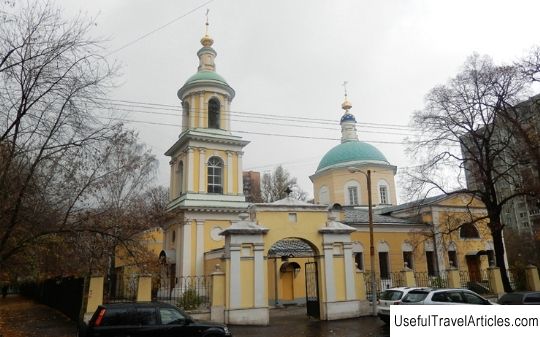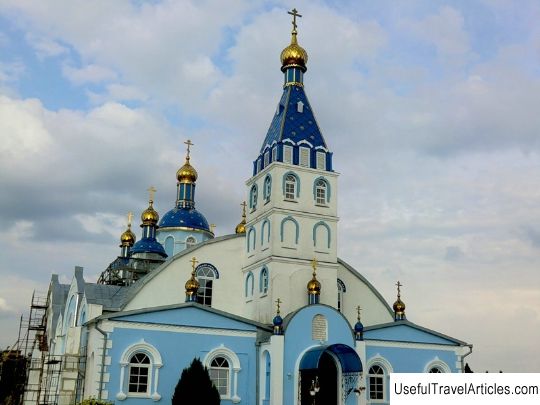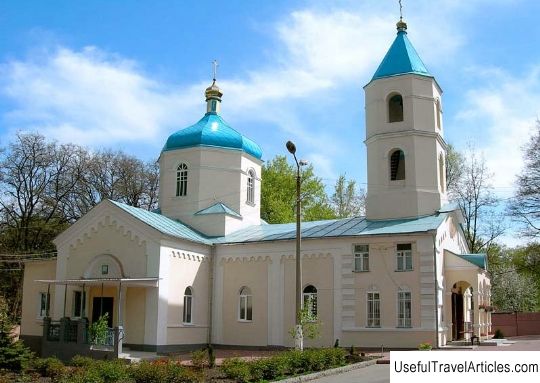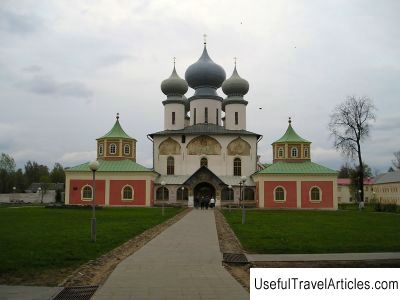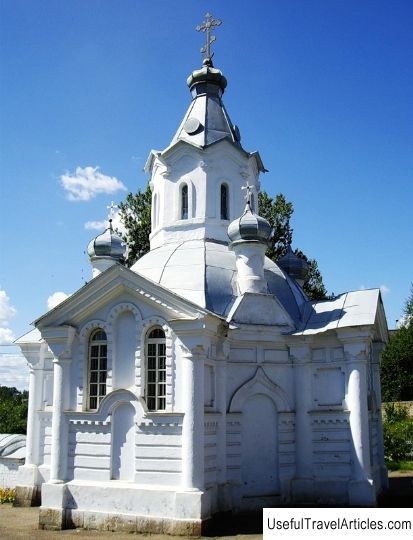Church of the Tikhvin Icon of the Mother of God description and photo - Russia - North-West: Borovichi
Rating: 7,7/10 (233 votes) 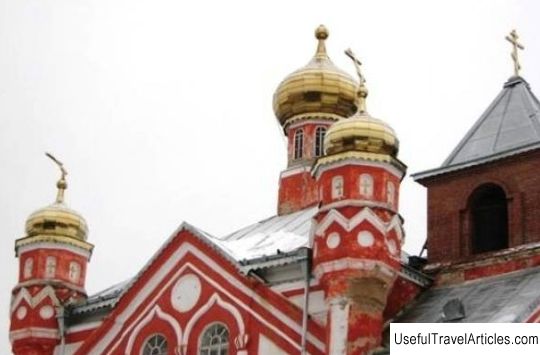
Church of the Tikhvin Icon of the Mother of God description and photos - Russia - Northwest: Borovichi. Detailed information about the attraction. Description, photos and a map showing the nearest significant objects. Photo and descriptionThe Church of the Tikhvin Icon of the Mother of God, made of stone, is located on a small bend of the Msta River, in the village of Yogla, Borovichi District, Novgorod Region. According to legend, this village was named after the name of the river. Egla means dark. Legend has it that at the end of the 14th century a wooden church was built here in memory of one of the first apparitions of the miraculous icon of the Mother of God, which mysteriously transported from Constantinople to the Novgorod lands. Later this icon began to be called the Tikhvin Novgorod icon. At the beginning of the 17th century, the icon became widely known in Russia, and temples were built in its honor. The icon gained fame thanks not only to its numerous miracles, but also to the fact that it was the patroness of the merchant people, especially in the northern Novgorod regions. It is known that the Msta River was the main waterway along which the famous trade route "from the Varangians to the Greeks" stretched. It was through Mstu that the Novgorod land had cultural and trade ties with ancient Byzantium and other states. A small area of the waterway was quite dangerous for shipping. The danger was the presence of many rapids that made it difficult for the trade barges to pass, and sometimes made it dangerous and even impossible. Several churches were erected along the way. They were built by merchants in fulfillment of a vow they made for successfully passing obstacles on Msta. In the middle of this dangerous water route there was a church in honor of the Tikhvin Icon of the Mother of God. In 1612, during the "Swedish devastation", the temple was burned by enemies. A wooden chapel was erected on this site. Emperor Peter the Great, who more than once passed through the Mstinsky thresholds, prayed in this chapel. In 1772, Catherine II also visited here. The chapel has not survived to this day. In the 19th century it was dismantled, and in its place in 1874 a new church in the name of the Tikhvin Icon of the Mother of God appeared. It was stone, five-domed with a belfry. Craftsmen painted and richly decorated it. The iconostasis was covered with gilding. An old churchyard has survived around the church, where ordinary people from nearby villages, noble persons and clergymen were buried. In 1938, the Tikhvin Church was closed. Soon after it was closed, a camp for the repressed appeared on the site of the churchyard, in which there were many hundreds of people. During the Great Patriotic War, the camp was transformed into an international camp: prisoners of war from many countries were imprisoned here. The temple was desecrated and plundered. At first there was a canteen in its premises, then they began to use it for other needs of the camp. In 1946-1947 the local collective farm used the temple, there was a warehouse here. And soon the collective farm needed iron, and the "craftsmen" tore it from the roof of the church, and put the roof on for firewood. Gradually the holy place was overgrown with weeds. In the late 1980s, an Orthodox community was re-organized in the village of Yogla. At the very beginning of 1990, the parish was officially registered. Divine services began to be held in a rural house equipped as a church. In April of the same year, the prayer house was consecrated, and after 2 months Nikolai of Sergievsky was appointed a priest of the parish. who was the first abbot of the revived parish. Work began on the restoration and restoration of the temple building. In the summer of 1996, by decree of the Archbishop of Novgorod and Old Russian Leo, priest Valery Dyachkov was appointed the rector of the church. In the autumn of the same year, construction work was continued. By the summer of 1999, the main work on the repair and restoration of the church was completed. On July 9, 1999, on the feast of the icon of the Tikhvin Mother of God, with a large number of believers, the first solemn service was held in the revived church of the village of Egla. Since 2001, children from the Yogol school and students of the art department of the Borovichi school of arts under the direction of the artist from St. Petersburg V.A. Kulikov. In March 2005, priest Alexy Ivanov was appointed the rector of the church.   We also recommend reading Pokrovsky Monastery description and photo - Russia - Golden Ring: Suzdal Topic: Church of the Tikhvin Icon of the Mother of God description and photo - Russia - North-West: Borovichi. |
